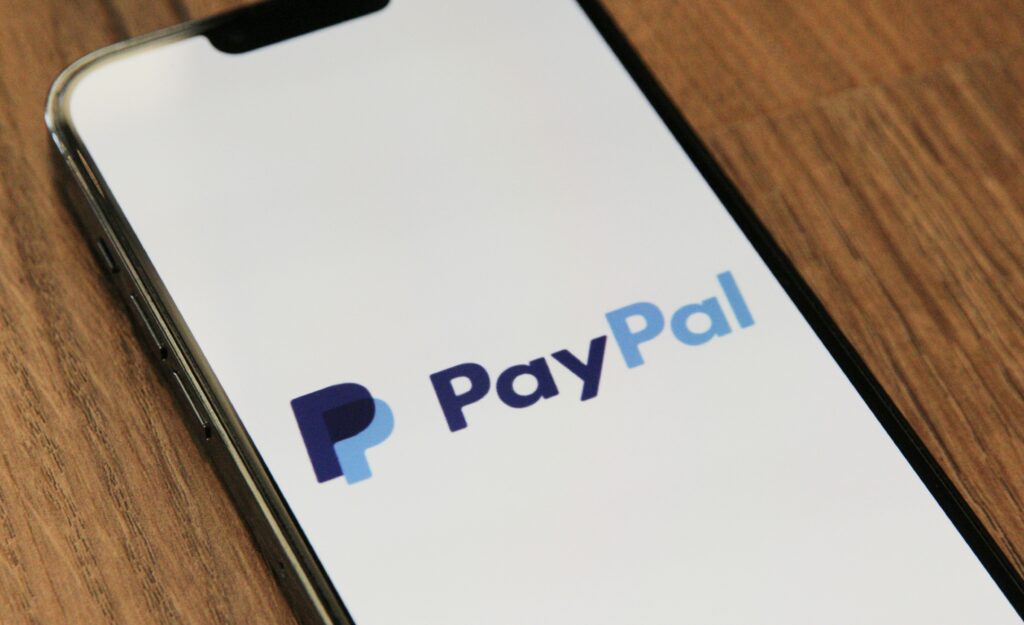Imagine waking up to find that Stripe, which handles a significant portion of your transactions, is holding onto 30% or more of your money due for up to 90 days!
That’s the reality for many Stripe merchants; Stripe account balance trapped in the system with no way out for an extended period of time. But there’s a way to move forward with your business—and a way to get your money back.
While many businesses rely heavily on popular providers like Stripe, an over-reliance on a single processor can pose unforeseen challenges.
The risks are even more pronounced for businesses with subscription models. Subscriptions are the lifeline of recurring revenue, and any disruption to this flow can cripple your business’s cash flow, tarnish customer trust, and in worst-case scenarios, bring operations to a halt.
This doesn’t mean Stripe or any other provider is inherently problematic, but it underscores a vital principle: diversification. In the world of payment processing, it’s prudent to have options and safeguards in place. It’s about ensuring that your business remains resilient and agile, ready to adapt to any twists in the tale of e-commerce.
In this guide, we’ll give you three strategies to move your credit card processing away from an over-reliance on Stripe, ensuring you neither lose money nor precious customer data. By the end, you’ll be equipped with actionable steps to diversify your payment processing approach and bulletproof your business against potential disruptions.
1. Recognizing the Signs: When Stripe Releases Your Funds
Every business owner cherishes the moment when funds held by a payment processor are finally released. But what if that moment is a harbinger of potential future disruptions?
Picture this: You’ve been conducting business smoothly with Stripe as your primary payment processor. Suddenly, you notice funds are held up and Stripe refuses to state why. Days or even weeks go by, causing distress and potentially harming your business operations. And then, just as suddenly as it began, Stripe releases your funds. A sigh of relief, right?
While it’s natural to feel relieved and even grateful, it’s crucial to interpret this event as a friendly warning rather than a benign hiccup. Why? Because payment processors, just like any other business entity, have their own set of internal protocols, risk assessments, and evolving compliance policies.
If your funds have been held once, it’s a clear indication that some aspect of your business triggered their risk parameters. This could very well happen again, and next time, the stakes might be even higher.
What’s the takeaway here? It’s simple yet profound: don’t let one single provider hold your business ransom. While Stripe provides an array of fantastic functionality and is undoubtedly an industry leader, it’s vital for businesses, especially those dealing with large transaction volumes or operating in niche industries, to have a backup payment processor on standby. It’s not about distrusting Stripe but about practicing smart business resilience.
2. Keeping Your Backup Active: Not Just for Emergencies
Establishing a backup payment processor is a pivotal step towards ensuring business continuity. However, there’s a common misconception floating around: you only have to use your backup in emergencies. This could be a costly assumption.
Understanding the Dangers of Dormancy
Just like a plant needs regular watering, your backup processor requires periodic activity. Without this, it could become dormant or even be flagged for suspicious activity. Let’s say you’ve opted for a second processor and gone through all the initial setup, but haven’t channeled any transactions through it. Over time, this inactivity can be perceived as irregular by the processor.
Many providers have internal protocols that might freeze or shut down accounts that remain inactive for extended periods—often as short as 60 days. In essence, your backup could be rendered useless precisely when you need it the most.
Balancing the Volume: An Ounce of Prevention
To prevent this pitfall, it’s wise to channel a fraction of your transactions through your backup regularly. Aiming for 20-30% of your volume not only keeps the account active but also familiarizes you with the backup’s operations and quirks. By doing so, you’re effectively stress-testing the backup in real-time, ensuring that if a situation arises where you need to switch entirely, the transition is seamless.
Furthermore, maintaining consistent volume through the backup fortifies your relationship with the secondary processor. Just as with any business relationship, consistent engagement builds trust. In the future, this trust could prove beneficial in negotiating better rates or resolving disputes more amicably.
Practical Benefits of Spreading Volume
By splitting your volume:
- You reduce dependency on a single provider, thereby mitigating risks.
- You gain firsthand experience with the backup processor’s systems, ensuring no surprises during emergencies.
- You can compare and contrast the services, fees, and user experience of both processors, giving you a more informed position when making future decisions.
3. Transitioning Clients to a New Processor: Leveraging Stripe Tokens
When contemplating a shift away from your Stripe account or any other payment processor, one primary concern that stands out is the potential hassle for clients. Nobody wants to put their valued customers through the cumbersome process of re-entering payment information or, worse, risk losing their business due to perceived inconveniences.
Fortunately, Stripe has provisions that can smooth this transition.
Decoding Stripe Tokens
At the heart of this transition process lie “Stripe tokens.” But what exactly are they? In the simplest terms, a Stripe token is a representation of your customer’s credit card information. Rather than storing sensitive credit card data directly (which comes with a slew of security concerns), Stripe, like many payment gateways, generates a unique token for each customer.
This token serves as a reference point, allowing businesses to bill clients without ever directly accessing their details.
Migrating Tokens: The Smart Move
If you decide to shift to another payment processor, these tokens are your golden ticket. By requesting Stripe to transfer these tokens, you essentially move customer records, without ever handling the sensitive data directly.
It’s crucial to note that Stripe won’t send these tokens to you; instead, they’ll send them to your new PCI-compliant payment processor. This is in line with industry best practices ensuring customer data remains secure and isn’t vulnerable to breaches.
Steps for a Smooth Transition
- Engage with your new processor: Before initiating the transition, engage in a dialogue with your new payment processor. Understand their protocols for accepting token migrations from Stripe.
- Request Stripe: Contact Stripe payment processing to transfer the tokens. Ensure you provide all necessary details of your new processor.
- Inform your clients: Transparency is key. It’s good practice to notify your clients about the shift, reassuring them that their payment details remain secure and this change is aimed at enhancing their overall experience.
The Payoff
By leveraging Stripe tokens:
- You ensure a seamless transition without asking clients to re-enter payment information.
- You maintain the trust quotient with your clients by keeping their data secure.
- You minimize business disruptions, ensuring recurring revenue streams (especially for subscription models) remain unaffected.
In essence, tokens act as bridges between your old and new payment processors, ensuring the transition is as smooth as the service you aim to provide.
BONUS TIP: The Power of Vaulting Customer Information
While we’ve discussed the advantages of leveraging tokens for transitioning between payment processors, there’s an even more potent tool at your disposal: Vaulting. This is a game-changer in the realm of payment processing, and here’s why every business owner should be familiar with it.
Understanding Vaulting: A Secure Digital Safe
Vaulting, in the context of payment processing, refers to the secure storage of customer payment details using encryption. Rather than storing raw data (like credit card numbers), a secure vault encrypts this information and produces a unique token. This token can then be used for transactions without ever revealing or handling the sensitive original data.
Why Vault? The Freedom to Move
By vaulting customer data:
- Enhanced Security: Vaulting ensures that your customers’ sensitive data is encrypted, reducing the risk of breaches, unauthorized access, and chargebacks.
- Flexibility: With vaulted tokens, you aren’t tethered to a single payment provider. Should the need arise to switch, you can simply use the tokens with a new processor, ensuring business continuity.
- Customer Peace of Mind: When clients know their data is vaulted (and not just stored), it boosts their confidence in your brand, leading to higher trust and loyalty.
Choosing Your Vault: In-house vs. Third-party Solutions
Most payment gateways and processors offer built-in solutions for vaulting customer data. However, for those who truly value independence, there are third-party vaulting software solutions available. These stand-alone vaulting services ensure you’re not tied down to any one processor or gateway.
Key Takeaways
- Plan for Tomorrow: While you might be content with your current processor, the future is unpredictable. Vaulting ensures you’re prepared for whatever lies ahead.
- Prioritize Security: In an era where data breaches make headlines, vaulting is no longer just an option—it’s a necessity.
- Invest in Flexibility: Whether you choose a built-in vaulting solution from a processor or a third-party tool, the freedom it offers is invaluable.
Conclusion
There’s a time and a place for merchants to use Stripe or its alternatives like Shopify, PayPal, and Square. But none of those options should be your main solution. And remember, the most important payment method to receive is credit card payments (Visa, Mastercard), which every processor accepts.
However, it’s also important to remember that the right partnerships can make all the difference. For those operating with high-risk business models like dropshipping, coaching, CBD, and startups, the challenges are even more pronounced. This is where having a specialized merchant account comes into play.
Are you in a high-risk industry and need a tailored solution? Look no further than DirectPayNet. With our deep industry knowledge, commitment to security, and unparalleled support, we offer high-risk merchant accounts designed to cater to your unique needs. With DirectPayNet, you’re not just getting a payment service solution; you’re forging a partnership that champions your business’s growth and resilience.
Don’t wait for the next withheld payout with your payment processor. Join DirectPayNet today and experience the difference of a provider that truly understands and caters to high-risk businesses.
Get in touch with our expert customer support team to get started.







